16 Years of Blender
· By Mike
A short video about my experience using Blender for the last 16 years, showing a history of Blender through screenshots of its interface presented in paper-craft.
Blender Is
This was going to be part of the Blender Is project, but it quickly increased in scope beyond what I could get done within the time available - not surprising as I wanted to celebrate the 16 years I had been using Blender rather than just snapshot what Blender Is to me right now. Also - I don't really like appearing in front of camera: I don't mind showing up for a quick cutaway, but I don't like being the visual focus. I guess I could have got a tripod and filmed myself on the laptop on the bus on the way to work with the sunrise behind me, and then a second shot where I work at 5Lamps Media, but the sound in the bus would have been awful.
Finding the Footage
The next stage was to find images of Blender's interface through the ages. I wasn't going to install every version of Blender and take screenshots. After a while I found Wikipedia Commons the best place to go, with Archive.org's WayBack Machine to find what the Access Space website was doing the year my life with Blender started. Wikipedia also kept info on what features were added on which version.
Paper Material
Like most micro-budget animations, the key was to do one thing really well - and in this case it was unfolding paper. I made a paper shader based on a texture set from Ambient CG, using height for translucency. Principled doesn't handle translucency well enough for my needs, so I built it from individual nodes. Also, only one side of the paper is printed.I decided against creating a half-tone printing pattern filter, as it would have made all the screenshots even harder to read - they're already moving and have paper texture. Plus what are we simulating here? What kind of printer does this fictional stop-motion animator have?
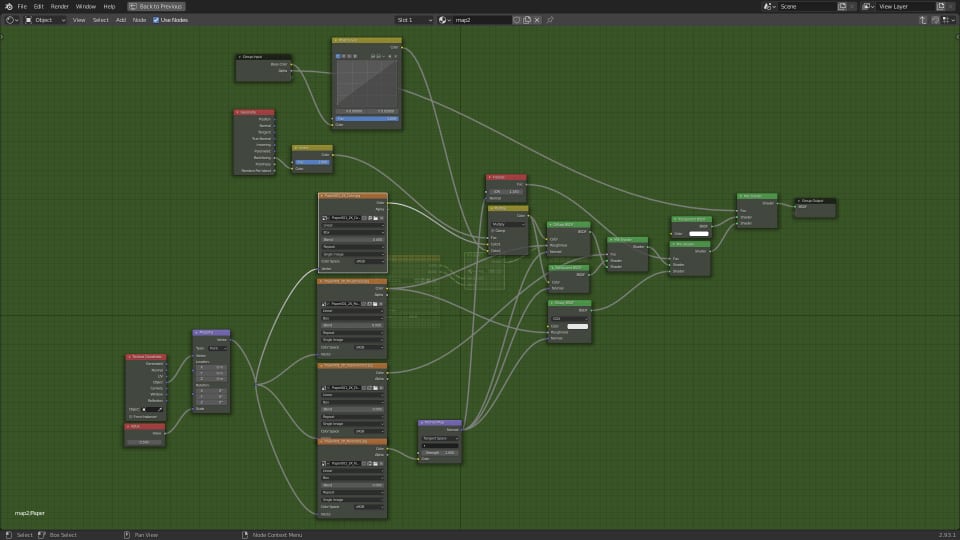
The animation makes use of the unfold add-on, which automatically unfolds a 3D model based on its faces. A lot of the sheets are randomly split into triangles by use of subdividing a whole lot and then decimating, but some are cut into faces manually so that the paper folds along lines I choose - these fold-lines following lines on the interface.
After some thought I decided to make the film 4x3 proportions... this means I can add a torn paper border on the left and right to bring it to 16x9 or top and bottom to bring it to square format. As the video is exactly 1 minute long it can be a YouTube short, etc.
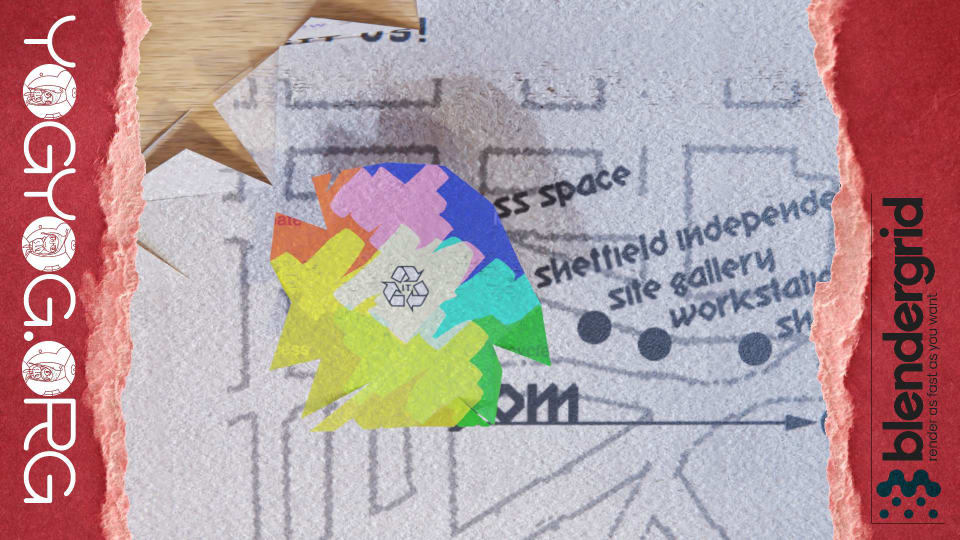

Also in 2006, most screens were 4x3 so it matches several screenshots.
As I mostly work on these projects on a bus during my commute, being able to work at reduced graphical fidelity and extend the life of my battery is a consideration. Being able to see textures within workbench mode was very helpful.
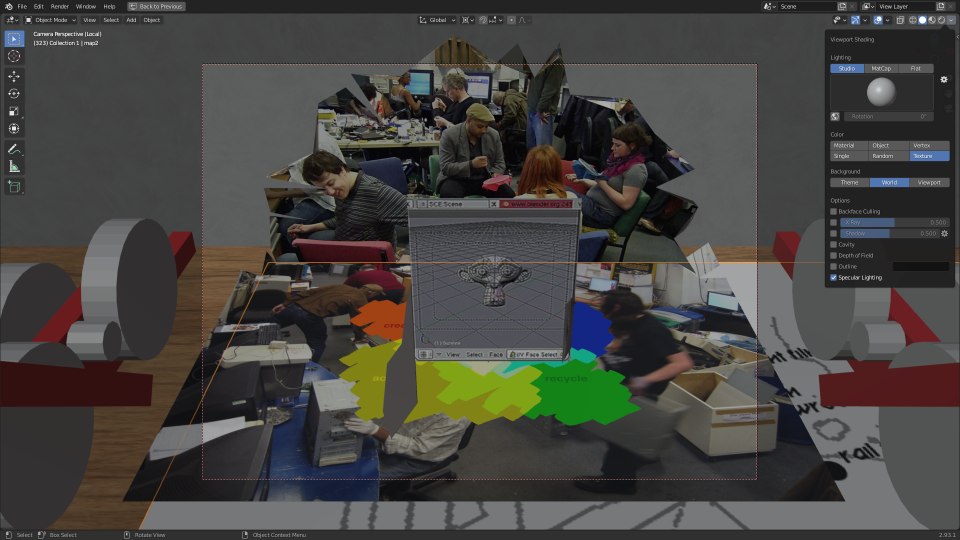
Greenscreen
While most of the images of Blender's features are still images, sometimes I want to show videos. Here we have to think in terms of the fiction that this is a stop-motion project : would the animator print out an entire video as a frame sequence and swap frames or would the comp on the videos afterwards? When is this stop-motion being made and what technology is available to them? When the final video is comped in, rather than using holdout I rendered a textured sheet of green paper and green-screened the videos on in editing. I used my free addon GreenScreen Within Eevee (yogyog.gumroad.com/l/kQeuU) as it's my preferred way, and Blender's fastest way, of chroma keying.
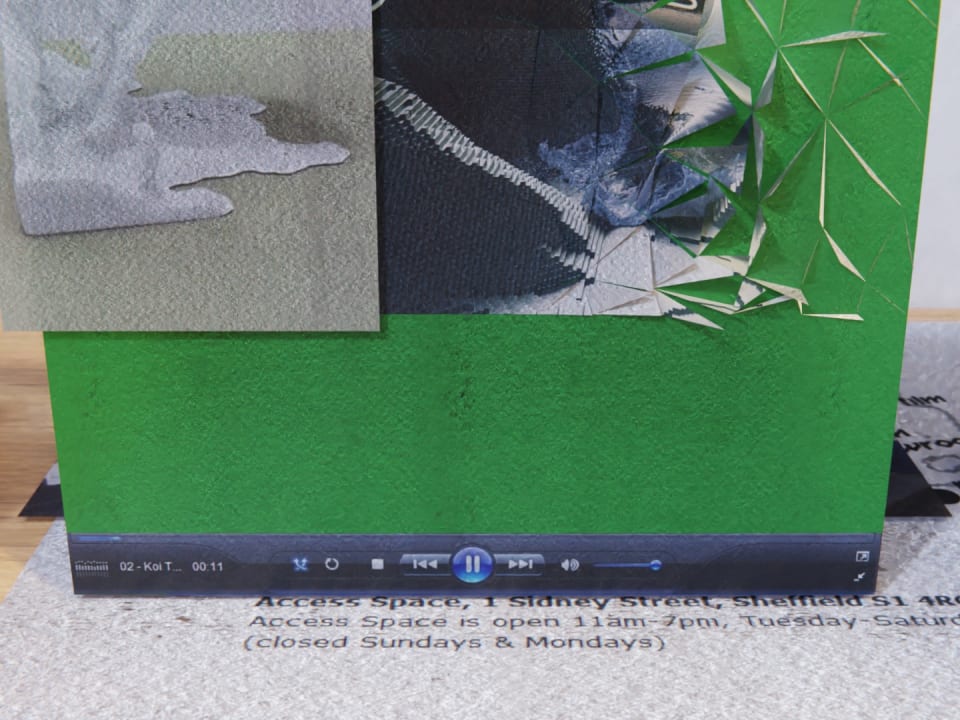
The Camera
The final consideration is the camera: a low depth of field sells that we're looking at small objects, and I used NLM denoising which impersonates camera grain quite well, especially when combined with Animated Seed. The movement also has to be limited. The kind of low-budget stop-motion this video impersonates probably doesn't have access to a motion control rig, so I limit the camera movement to the kind of rig that could conceivably built out of technic Lego, and built a simple version of it in Blender to cast shadows and reflect light.
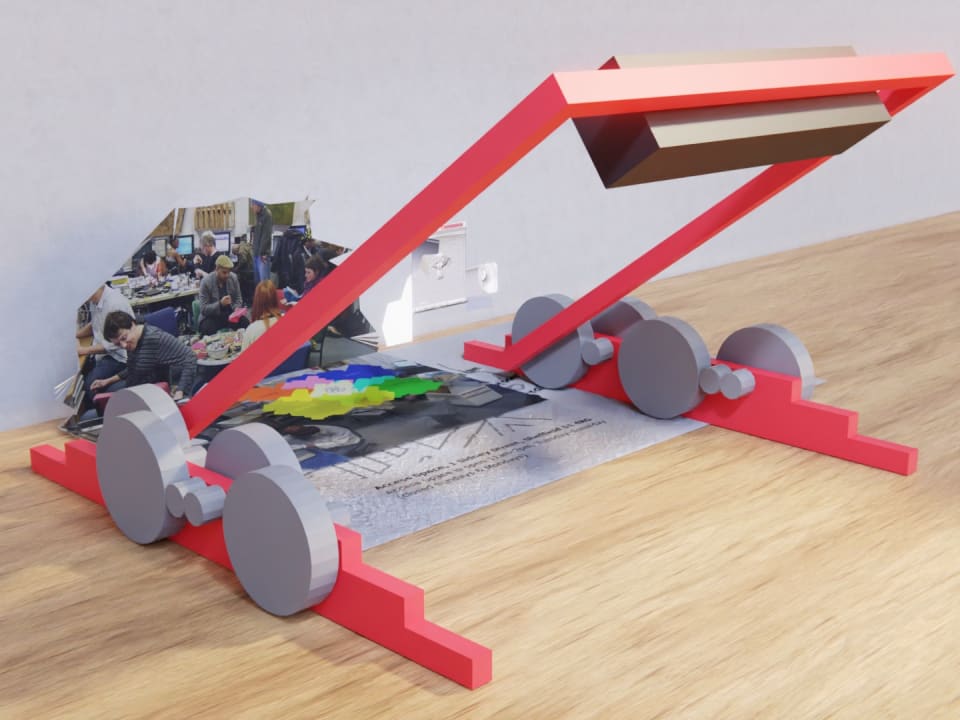
Music and Finishing
I wrapped it up with a piece of chiptune I composed - a re-imagining of the Perspective Tricks theme-tune, edited to exactly one minute. To the frame. I plan to do more exploring of the one minute format - it's challenging to keep things this short but it works for the concise exploration of a single idea. Square and vertical video also provide interesting challenges. Including titles or credits, however, is impossible.